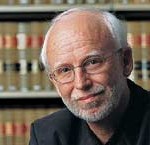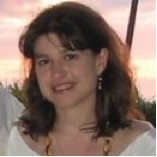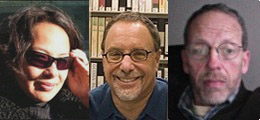Part I of Open Access Scholarship was an interview of Michelle Pearse, conducted by Executive Editor Mary Minow. As promised, here is part II, which will specifically address law reviews and legal scholarship.
Eli Edwards: Nearly two years ago, a group of academic law library directors promulgated the Durham Statement on Open Access to Legal Scholarship. It called for (1) open access publication of law school-published journals, and (2) an end to print publication of law journals, coupled with a commitment to keeping the electronic versions available in ‘stable, open, digital formats.”
Recently, we talked with Richard A. Danner, Rufty Research Professor of Law and Senior Associate Dean for Information Services at Duke Law School.
Danner: Duke University adopted an open access policy in March 2010. The policy, which is available here [PDF] has not to my knowledge ever been published in final form. The policy is very similar to those adopted at schools and other entities at Harvard; the main difference
being that Duke’s policy is university-wide. It is also stated as a mandatory policy, but the legislative history, such as it is, indicates it is not.
Duke has had DSpace running, under the name DukeSpace, for several years, mostly for electronic theses and dissertations. In the short term it is also being used as the platform for archiving and access of faculty publications, but the longer term plans are to move toward a new repository system being developed at Duke using the Fedora Commons.
The Law School started its own Faculty Scholarship Repository in 2005, providing free access to the majority of all articles published by then members of the Duke Law faculty. The contents of that archive are now the foundation of the Duke Law Scholarship Repository on BePress, with which we have partnered through Nellco since 2009. Our repository policies do not include a mandate, but in practice nearly our faculty publishes of a scholarly nature is included. Over time, it will
include: the texts of lectures delivered at Duke Law, webcasts from scholarly presentations and conferences, publications of Duke Law’s research centers, Duke Law student works, and more.
Edwards: Prof. Danner, you recently presented a paper at Duke, at the workshop, “Implementing the Durham Statement: Best Practices for Open Access Law Journals” on Oct. 22, 2010. [The current draft of the paper is available here: Danner draft formatted RAD 23 Nov 2010.PDF (PDF); see below for an excerpt of the most recent draft – EE] If you were to summarize the progress made in the last two years, what would you say?
I am not sure what actually I can add to what is in the paper I sent, which my co-authors and I did revise substantially after the October conference. As Michelle [Pearse – see previous blogpost/interview] knows, student law journal editors often say that they are reluctant to move to all-electronic publishing because authors are reluctant to publish in non-print journals. [This and other issues surrounding open access legal scholarship will be part of an upcoming article in Duke Law Magazine.]
To assess these comments, my Duke colleagues, Marguerite Most and Kiril Kolev, and I have designed a brief survey to gather information about attitudes toward electronic publication of scholars who have recently published articles in leading law reviews. After pretesting the survey in December and gaining approval from University reviewers, we will administer the survey in mid-January to authors of articles in the last two completed volumes of the lead journals published at the US News top-fifteen ranked law journals.
Faculty members who frequently publish articles in the top law reviews and journals will share their attitudes towards online publications by filling out a nine-question online questionnaire. about 500 scholars will be contacted via email and invited to fill out the survey. The questions are designed to gain insight into how important print publication is to authors who publish in leading law journals.
I think this should be an interesting exercise and look forward to the results.
Edwards: As will we! Thank you so much for talking with us, Prof. Danner.
========================================================================
Eli Edwards is an intern and Content Minion of the Stanford Copyright & Fair Use site.
Richard A. Danner is Senior Associate Dean for Information Services, and Archibald C. and Frances Fulk Rufty Research Professor of Law. Professor Danner has been active in the affairs of the American Association of Law Libraries, the International Association of Law Libraries, the American Bar Association Section of Legal Education and Admissions to the Bar, and the Association of American Law Schools. From 1984-94, he served as editor of AALL’s Law Library Journal. He was President of AALL in 1989-90 and has chaired several AALL special committees and task forces; he served on the executive committee of the AALS from 2002-2004, and as first vice-president of the IALL from 2004-2010.
========================================================================
EXCERPT:
The Durham Statement Two Years Later:
Open Access in the Law School Journal Environment
The Durham Statement calls for law schools to end print publication of law journals in a planned and coordinated effort led by the legal education community, focused on ensuring access to and preservation of the electronic journal literature. Without that effort, in an economic environment in which external factors are more than ever impacting libraries’ collection decisions and law school budgets, what can we do to assure that electronically-published legal scholarship will remain available to future scholars?
…
1. It is time for law librarians to explore alternatives for preserving legal scholarship working in concert with the other stakeholders, including:
- Existing efforts to preserve legal information, such as the Legal Preservation Alliance (LIPA), which in 2010 established the Legal Information Archive as a collaborative digital archive . . . to preserve and ensure permanent access to vital legal information currently published in digital formats.
- Legal publishers holding extensive libraries of law journal content in electronic format — LexisNexis and Westlaw, but perhaps primarily HeinOnline, with its extensive retrospective collections. Will their interests in preserving access to law journals for their commercial value mean they will now preserve digital content as libraries have traditionally preserved print content?
- Established preservation and electronic archiving programs such as Portico and LOCCKS, which have worked mostly with libraries and publishers outside of law.
- The Library of Congress, which already receives copies of all law journals whether published in print or electronic format under the mandatory deposit requirements of the Copyright Act, and works to establish best practices for digital preservation through the National Digital Information Infrastructure & Preservation Program (NDIIPP).
- Institutional repositories, such as Harvard University’s local Digital Access to Scholarship at Harvard (DASH), or services such as the bepress Digital Commons, which hosts repositories for a number of law schools and supports law review publication.
- Printers of law journals, in order to forge the future role of print for preservation or print-on-demand services for legal scholarship.
2. It is also necessary to promote the use of common standards for formatting the files of the documents. Joe Hodnicki has noted ALA’s and ACRL’s calls for across-the-board format standardization, and the use of a standard mark-up language (e.g., XML) instead of PDF. Wayne Miller has proposed developing mutually-agreed upon law journal formats for archiving, preservation, and other uses.
3. It is time as well to take the initiative to create opportunities for dialogue with law school deans, law review editors, interested faculty, and legal information vendors on the need for concerted action regarding access to and preservation of electronically published law journals.
These activities do not answer all of the concerns raised regarding the Durham Statement’s call to end print publication of law journals, but they should at least provide a start for action toward meeting those concerns.

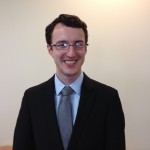



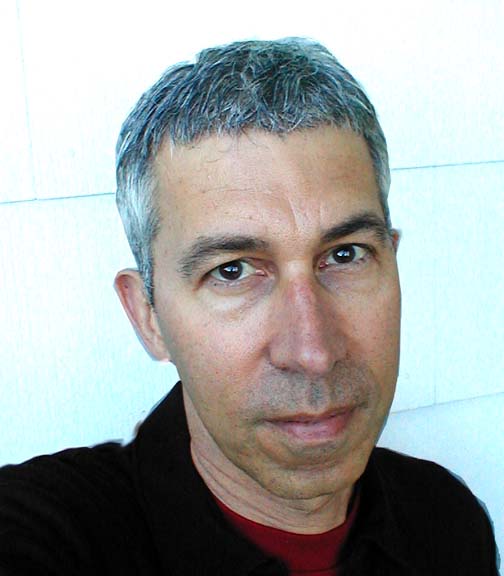 Rich Stim is corporate counsel for Nolo. Rich is the author of several Nolo intellectual property books including:
Rich Stim is corporate counsel for Nolo. Rich is the author of several Nolo intellectual property books including:
